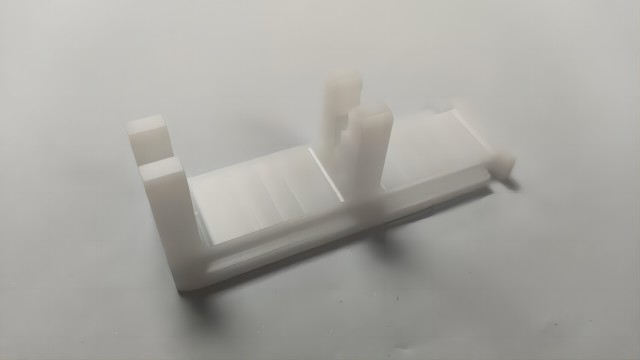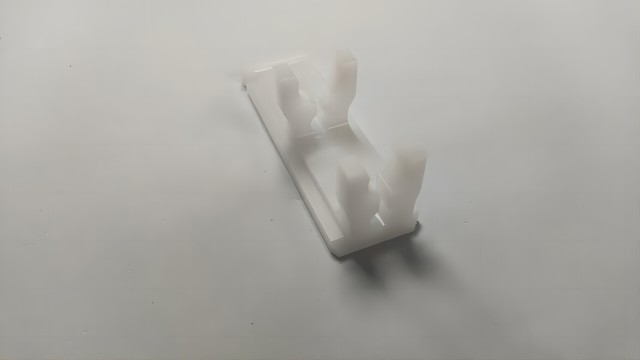Although CNC machining of plastic parts is easy to cut, it also has some difficulties, such as easy deformation, poor thermal conductivity, and very sensitive to cutting force, its processing accuracy is not guaranteed, because it is easy to be affected by temperature, and it is also easy to produce deformation in processing, but we have ways to deal with it.Precautions for CNC machining of plastic parts:
1. Tool selection:
•As the plastic material is relatively soft, sharp tools should be selected. For example, for ABS plastic prototypes, carbide tools with sharp cutting edges can effectively reduce tears and burrs during processing.
•Choose tools based on the shape and detail complexity of the prototype. If the prototype has delicate internal structures or narrow gaps, these areas will need to be precisely machined using small tools such as smaller diameter ball end mills.
2. Cutting parameter settings:
•Cutting speed: The melting point of plastic is relatively low. Cutting too fast can easily cause the plastic to overheat and melt. Generally speaking, cutting speeds can be faster than those for machining metallic materials, but should be adjusted based on the specific plastic type and tool conditions. For example, when processing polycarbonate (PC) prototypes, the cutting speed can be set at around 300-600m/min.
•Feed speed: Appropriate feed speed can ensure processing quality. Excessive feed rate may cause the tool to bear excessive cutting force, resulting in a decrease in prototype surface quality; too small feed rate will reduce processing efficiency. For ordinary plastic prototypes, the feed speed can be between 0.05 – 0.2 mm/tooth.
•Cutting depth: The cutting depth should not be too deep; otherwise, large cutting forces will be generated, which may deform or crack the prototype. Under normal circumstances, it is recommended that the depth of a single cutting be controlled between 0.5 – 2mm.

3. Selection of clamping method:
•Choose appropriate clamping methods to avoid damaging the prototype surface. Soft materials such as rubber pads can be used as a contact layer between the clamp and prototype to prevent clamping damage. For example, when clamping a prototype in a vise, placing rubber pads on the jaws not only clamps the prototype securely but also protects its surface.
•When clamping, ensure the stability of the prototype to prevent displacement during processing. For irregularly shaped prototypes, custom fixtures or combination fixtures can be used to ensure their fixed position during processing.
4. Processing sequence planning:
•Generally speaking, rough machining is done first to remove most of the allowance, leaving about 0.5 – 1 mm allowance for finishing. Roughing can use larger cutting parameters to improve processing efficiency.
•When finishing, attention should be paid to ensuring the dimensional accuracy and surface quality of the prototype. For prototypes with higher surface quality requirements, the final finishing process can be arranged, such as milling with a small feed speed, a small depth of cut, or using polishing tools for surface treatment.
5. Use of coolant:
•When processing plastic prototypes, be careful when using coolant. Some plastics may react chemically with the coolant, so choose the appropriate type of coolant. For example, for polystyrene (PS) prototypes, avoid using coolants that contain certain organic solvents.
•The main functions of coolant are cooling and lubrication. During the machining process, appropriate coolant can lower the cutting temperature, reduce tool wear, and improve machining quality.
Post time: Oct-11-2024
